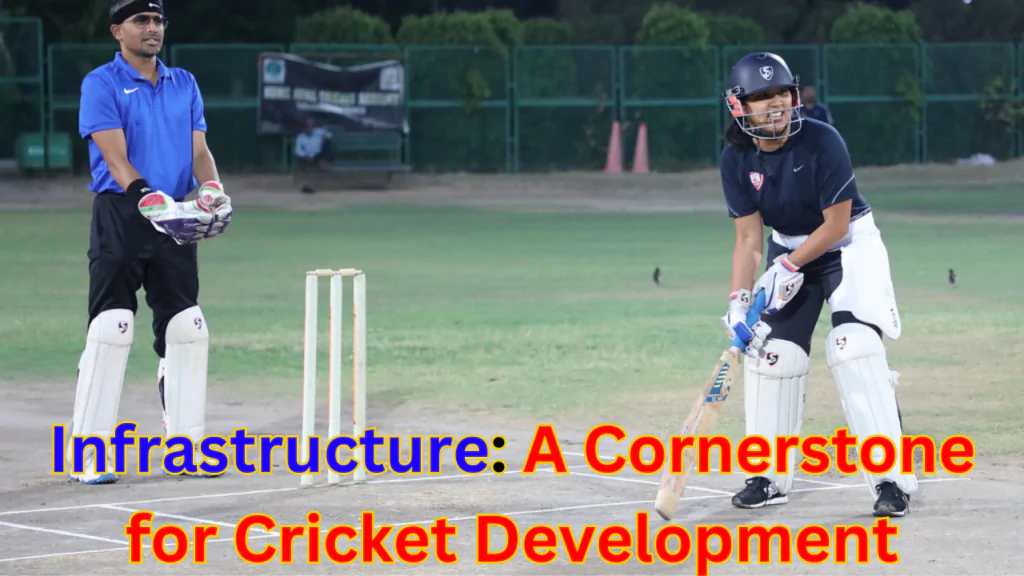Evolution of Cricket– The world of cricket is a fascinating realm that never fails to captivate its enthusiasts.
Introduction (Evolution of Cricket)
Welcome back to “Around the World of Cricket,” in which we explore the fascinating history of the game over many ages and continents.
Today, we’ll be concentrating on the fascinating worlds of Indian and West Indies cricket.
In this article, we analyse the changes that have moulded the cricketing environment while taking a sentimental walk down memory lane.
Table of Contents
West Indies: A Powerhouse in the Past
Once upon a time, the West Indies cricket team reigned as a cricketing powerhouse. They clinched the 1975 and 1979 ODI World Cups with remarkable ease, making their dominance seem like a mere pastime.
The anticipation was high for the 1983 World Cup as well, but India’s unexpected victory changed the course of cricket history.
India’s Triumph and the Shift in Cricket’s Landscape
The 1983 World Cup saw a watershed moment in cricket as India, against all odds, secured victory. Kapil Dev’s extraordinary catch to dismiss Vivian Richards and Balwinder Sandhu’s impeccable delivery to dismiss Gordon Greenidge will forever be etched in cricketing lore.
This triumph marked a turning point in cricket’s narrative, shifting the spotlight from West Indies to India
Evolution of Cricket in Australia (Rise to Power)
Australia became the new cricketing superpower after the 1987 World Cup. They were one of the most formidable teams on the international stage as their domination persisted.
Even in today’s context, Australia remains a strong contender in international cricket, consistently ranking among the favorites in major tournaments.
The Mind Games: India and Australia’s Favoritism
The mind games in cricket are a strategy well-known among players and fans alike. Leading up to ICC events, cricketers worldwide often label India as the favorites, aiming to alleviate pressure on themselves while redirecting it towards the Indian team.
This tactic adds an intriguing layer to the dynamics of international cricket.
The Impact of Fans on the Game
The influence of fans on cricket cannot be understated. The atmosphere created by enthusiastic supporters can sway the momentum of a match.
MS Dhoni’s recollection of the electrifying moment when the entire Wankhede Stadium sang ‘Vande Mataram’ during the 2011 World Cup final underscores the power of fan support.
Infrastructure: A Cornerstone for Cricket Development

The foundation of cricket development lies in strong infrastructure. This includes accessible facilities, practice nets, and quality playing surfaces. A prime example is India’s progress, with international-standard stadiums and training centers now present even in smaller cities.
However, West Indies faces challenges in providing consistent infrastructure across its islands, hindering their cricketers’ growth.
Evolution of Cricket in West Indies
The cricketing landscape in West Indies has seen limited evolution since their glory days in the 1970s and 80s. The lack of updated infrastructure and coaching methods hinders their cricketers’ progress.
Young talents need proper facilities and modern training techniques to excel on the international stage.
The Emergence of Tilak Varma: A Potential Solution?
Tilak Varma’s emergence as a young left-handed batting talent brings hope to Indian cricket’s left-hand deficiency. His natural ability to play the pull shot and adapt to various conditions echoes the finesse of Rohit Sharma.
While it may be early to declare his place in the 50-over World Cup, his performance hints at promising possibilities.
The Dilemma of Team Composition
As India strategizes for the World Cup, a dilemma arises regarding team composition. The presence of both Kuldeep Yadav and Yuzvendra Chahal in the playing XI could mean compromising on batting depth.
The choice between balancing the batting order and maximizing the spin bowling prowess presents an intriguing challenge for the Indian selectors.
Sanju Samson’s Role in the Middle Order
Sanju Samson’s versatility as a middle-order batsman brings value to Team India. His ability to tackle spin effectively and contribute significantly in ODIs makes him a viable choice.
However, with fixed positions for Rohit Sharma, Virat Kohli, Shubman Gill, Shreyas Iyer, and KL Rahul, Samson’s role hinges on future opportunities.
India’s Quest for Redemption in T20Is
The ongoing T20I series against West Indies provides India with an opportunity to showcase their resilience. While the initial defeat caught the team off guard, the upcoming matches in Guyana and the USA offer a chance to bounce back.
The spinning conditions in these venues could favor India’s spin bowling combination.
Conclusion
As we navigate the intricate tapestry of cricket’s evolution, it becomes evident that the sport is a dynamic amalgamation of history, strategy, and talent. West Indies’ legacy, India’s aspirations, emerging talents, and strategic challenges shape the cricketing narrative.
With various series on the horizon and the impending World Cup, cricket enthusiasts can look forward to an exciting journey ahead.
Frequently Asked Questions (FAQs)
Evolution of Cricket – Here are five frequently asked questions related to the blog post:
Q: What were the key moments that led to the shift in cricket’s landscape from West Indies to India after the 1983 World Cup?
A: The victory of the Indian cricket team in the 1983 World Cup played a pivotal role in altering the cricketing narrative. Kapil Dev’s extraordinary catch to dismiss Vivian Richards and Balwinder Sandhu’s impeccable delivery to dismiss Gordon Greenidge were standout moments that contributed to this shift.
Q: How has the lack of consistent infrastructure affected cricket development in West Indies?
A: The inconsistency in providing proper infrastructure across the various islands of West Indies has hindered the growth of cricket. Young talents need accessible facilities and modern training techniques, which are essential for their progress on the international stage.
Q: What challenges does India face in terms of team composition for the upcoming World Cup?
A: India is grappling with the challenge of striking a balance between maximizing their spin bowling prowess with the combination of Kuldeep Yadav and Yuzvendra Chahal and maintaining a strong batting order. This presents a dilemma for the selectors in choosing the best team composition.
Q: How has Sanju Samson’s role evolved within the Indian cricket team, especially in the middle order?
A: Sanju Samson’s versatility as a middle-order batsman has been recognized by the Indian team management. He has showcased the ability to tackle spin effectively and make significant contributions in ODIs. However, his role is contingent upon the team’s strategies and future opportunities.
Q: What are the expectations for India’s performance in the ongoing T20I series against West Indies?
A: Despite the initial setback, there is optimism regarding India’s performance in the ongoing T20I series. The matches in Guyana and the USA, with their spinning conditions, could play to India’s advantage, especially with their spin bowling combination of Kuldeep Yadav and Yuzvendra Chahal.

